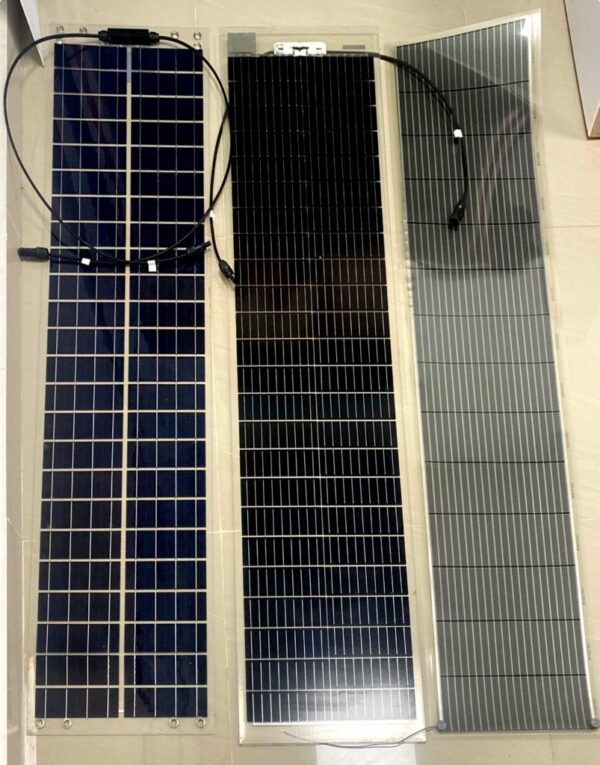A group of researchers led by the Triangle Research and Development Center (TRDC) in Israel investigated the impact of using photovoltaic power generation in a greenhouse hosting cucumber crops and found the impact on crop yield is negligible.
“Our study compares the impact of opaque silicon PV versus semi-transparent organic photovoltaic technologies installed at canopy height within a Mediterranean polytunnel greenhouse on the growth of cucumber plants,” the research's corresponding author, Esther Magadley, told pv magazine. “The proposed case study shows the potential of PV integration inside greenhouses. However, further studies investigating the effect of the altered installation location on PV lifetimes and the effect of the altered light spectrum inside the greenhouse are required for different greenhouse types and locations.”
In the paper “Examining the effect of different photovoltaic modules on cucumber crops in a greenhouse agrivoltaic system: A case study,” published in Biosystems Engineering, Magadeley and her colleagues explained that they used three different semi-transparent PV technologies in their work — bifacial glass-encapsulated PERC panels, bifacial plastic-encapsulated PERC modules, and semi-transparent organic photovoltaics (OPVs).
They compared the performance of the PV-powered polyethylene greenhouse with that of a reference greenhouse without solar power generation. They also compared the performance of the three PV technologies deployed on the greenhouse to that of reference solar panels installed outside the greenhouse.
Each greenhouse hosted 400 cucumber seedlings, with the plants being arranged in four pairs of rows with 40 cm in-row spacings. Watering was performed for 30 min every day to give about 30 m3 of water per hectare. The PV system utilized glass-encapsulated and plastic-encapsulated panels, each with an efficiency of 22.5%, and OPV panels with an efficiency of 4%.
For their analysis, the academics considered parameters such as light transmission, plant growth, and PV module performance. They stressed that the diffusing nature of the polyethylene cover might enhance the performance of bifacial PV modules and said regular cleaning should be ensured to increase this effect.
The team analyzed the impact of the solar panels on crop growth by taking into account plant height, internode length, and stem diameter. It noted “significant” variations in plant height depending on the PV technology and roof plastic conditions.
The tests showed that the plants under the OPV and plastic modules grew bigger, which may depend on a better adaptation to capture more light in shaded conditions. ” Although both the plastic and glass silicon modules had spacings between cells to provide some transparency and the OPV modules had semi-transparent active material, the level of module transparency are aspects requiring further optimization to suit the greenhouse and crop requirements,” the scientists explained.
They also found that the OPV, plastic, and glass technologies achieved an actual efficiency of 2.8%, 11.6%, and 16.7%, respectively. “the glass-encapsulated Si-PV modules outperformed others regarding electrical output, but this came at the cost of a light spectrum less favorable for plant growth,” they specified.
“The glass-encapsulated silicon PV modules delivered enhanced crop yields, and highest efficiency,” Magadley further explained. “However, the OPV modules, with lower efficiency yielded fruits with a higher average weight, suggesting their light transmittance might be more attuned to plant efficient growth. While the current findings lean in favor of the glass-encapsulated modules, the potential of advanced OPV technologies, especially those with spectral transmittance fine-tuned for plant growth, remains an exciting prospect for greenhouse integration, especially as OPV efficiencies increase.”
Looking forward, the scientists are planning to apply custom-made PV modules, more efficient greenhouse materials, and “innovative” designs to optimize light distribution inside the greenhouse.

Image: Triangle Research and Development Center (TRDC)
This content is protected by copyright and may not be reused. If you want to cooperate with us and would like to reuse some of our content, please contact: editors@pv-magazine.com.




A combination with transparent double-sided hybrid panels for electricity and solar hot water supply to the roots will increase the yield by 80%.